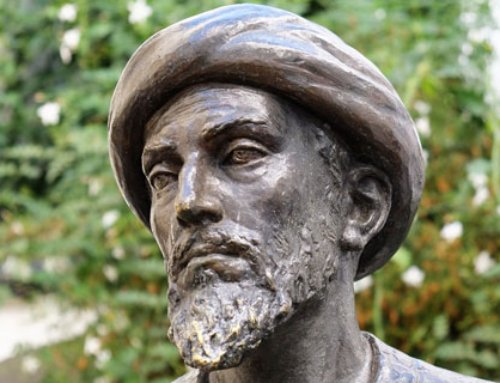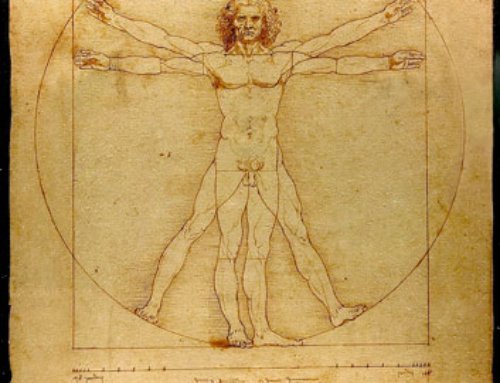An Antwerp emeritus diamantaire and pioneer of colored diamonds, Arthur Langerman built up the world’s largest collection of anti-Semitic images before bequeathing it to the Technical University of Berlin.
Struck by the resurgence of anti-Semitism, Arthur Langerman donated his collection of 8,000 cartoons to the Technical University of Berlin for historical, scientific and educational purposes.
Mensch, or mentsh, a Yiddish word derived from the German Mensch. A person of “integrity or honor“. Antonym: Unmensch, a person who treats others cruelly or without compassion.
From the first months of his life, little Arthur was chased by the Unmensch and saved by other Mensch. He was born on August 21, 1942 in occupied Antwerp (“what a crazy idea“, he says smiling), where his Jewish parents of Polish origin, Zysla (Cécile) Blajwas, fashion creator, and Salomon Langerman, furrier, married in 1941, had arrived in 1926. In 1940, parents and grandparents fled to France, to a village near Bordeaux. The Nazis coaxed them and promised them their lives if they returned. “My mother’s mother said, ‘I miss the Kievitstraat. Let’s go home.‘” Since then, this gullibility has haunted him.
On March 28, 1944, the Gestapo arrested his parents, who were deported to the Dossin barracks (Mechelen) and then to Auschwitz. Feeling the end was near, the Germans entrusted Arthur to the nursery in rue Baron de Castro (Etterbeek), run by the SIPO-SD directed by Karl-Constantin Canaris, nephew of the Admiral of the Abwehr, Wilhelm Canaris. An intervention by Queen Elisabeth is believed to have suspended the deportation of a hundred babies, including Arthur.
Stamped with the words “Jew – Jood”
Recently, shortly before his death, an educator from this home sent the Jewish Museum in Brussels a photo album in which Arthur recognized himself. He showed it to the current Spanish owner of the home, who has been looking for the children who were taken in. Among the relics of his childhood, he also keeps a group portrait with the other children of the Baron de Castro street and the Belgian identity cards of his parents, grandparents, uncles and aunts, stamped with the words “Jew – Jood“.
Solomon, his father, dies in deportation. During the Selektion at the end of the ramp at Auschwitz, the Nazi officer, probably Mengele, at first sends Cecile to the right (death), changes his mind and points to the left. Survivor, too weak on her return to take Arthur back, she leaves him entrusted to a Protestant couple in Jumet, near Charleroi, with her cousin Arnold, an orphan. He will later offer a burial to the couple, Edmond Houyoux and Emilia Sevrin, who will be made “Righteous Among the Nations“.
‘Collectivitis’
“The collector is a sick man with only one idea in mind. He wants an object, must absolutely have it, even if he never sees it again.” A vase collector from Murano, Langerman one evening passes in front of a Milanese showcase, rings the bell, and the dealer opens it for him in his pajamas. “I need this piece,” he tells him. The other announces his price, he pays it. On his return, he puts the vase in a window and hasn’t laid a glance at it again.
He nevertheless keeps several dozen of these Murano glasses on the second floor of his house in Uccle, pieces worthy of Joan Mirò or the Shadoks.
Affected of ‘collectivitis’ from 6 years old, he begins with the marbles then it is the stamps, the gussets watches, the netsuke (the buttons of kimono in ivory), comic strips (later, Jean Van Hamme will transform him in “Largo Winch” in Art Longman, agent of the Mossad).
At the age of 15, he has to leave school to help his family and gets trained: he becomes a diamond cutter in the Antwerp office of an American cousin. “Diamond is carbon, therefore wood, and like wood is sawn or split, diamond is cleaved, i.e. split.”
One day, in 1965, cutting a stone, a cognac reflection made him fall in love with the colored diamond, which was not very popular at the time. Over time, the value of this variety of diamond has increased a hundredfold, and he owns the largest collection in the world.
In 1961, at the age of 19, the Eichmann trial opened his eyes to the unsaid of the camps. This emergence of the past nourished his collection: he scoured the markets, collected everything about the Jews, discovered a profusion of anti-Semitic drawings from fifteen countries, except Spain, Portugal and Ireland (“yet to this day among the most anti-Semitic, very Catholic countries, where Jews are very few in number, as in Aalst, from where they are almost absent“). He buys and shows these representations of Jews as vermin, insects, rodents, to his relatives, who take this compulsion for a “madness“.
How many Jews on Earth?
One of his oldest objects, a painting of Simon of Trent, depicts a child found dead in the street in 1475, the Jews being accused of having turned his blood into bread. Canonized, he became Saint-Simon, until Paul VI decanonized him in 1976, denouncing this deadly legend.
Until the early 1990s, these objects seem to belong to the past. “Since then, history has caught up with me, and the daily upsurge, duly noted, of anti-Semitic public acts and statements is terrifying“.
The anti-Jewish fantasy is fueled by ignorance and the idea that they would be far more numerous than they are: “I always ask this question: how many Jews are there on earth? A journalist once told me: ‘A billion’. At that figure, Langerman looked up to the sky: “The most anti-Semitic people have never met a Jew…“.
A crucial question for the collector: what to do with his collection when no museum can afford to buy it? The Jewish Museum does not wish to “provoke“, Israel (the only country free of anti-Semitism…) is only interested in the Shoah.
However, faced with the return of anti-Semitism, its “madness” becomes an object of praise. Stéphane Grimaldi, director of the Caen Museum, is exhibiting at the Caen Memorial 150 pieces from a collection of 8,000, including more than 3,500 postcards, more than a thousand sketches, several hundred posters, leaflets and brochures, illustrated books, newspapers and magazines, as well as a large number of paintings, engravings, drawings, sculptures and everyday objects spread over four centuries. At the Caen Memorial, the exhibition attracted 500,000 visitors in one year and a documentary was dedicated to Arthur Langerman, entitled “The Collector“.
In 2017, the Zentrum für Antisemitismusforschung at Berlin’s Technische Universität declared itself taker of the collection (“apart from a few singularly horrible pieces that I keep“, he laughs) and is currently inventorying it before making it available to international researchers and exhibiting it for historical, scientific and educational purposes. The mayor of Berlin has allocated a building in the Moabit district to the institute, which was endowed by the Federal Parliament. The Dossin Barracks in Mechelen will be hosting an exhibition, “Fake Images“, from December 4, 2020 to August 31, 2021.
Zola, depicted as a pig
By the way, have great painters committed anti-Semitic works, as is the case with great writers such as Louis-Ferdinand Céline or Paul Morand? “I have seen Daumier’s engravings, but I have hardly found any anti-Semitic works in the history of painting”. On the other hand, great authors have been the subject of caricatures in a follicle, the Museum of Horrors: during the Dreyfus affair, Zola was represented there as a pig.”
The son of Arthur Langerman, a researcher at the FNRS, one of the world’s leading specialists in algorithms, took over the family business, advised by his father. On September 13, the Jewish Lay Community Center of Brussels inaugurated an exhibition, “Plume de Fiel,” and will award Arthur Langerman the title of “Mensch of the Year.






